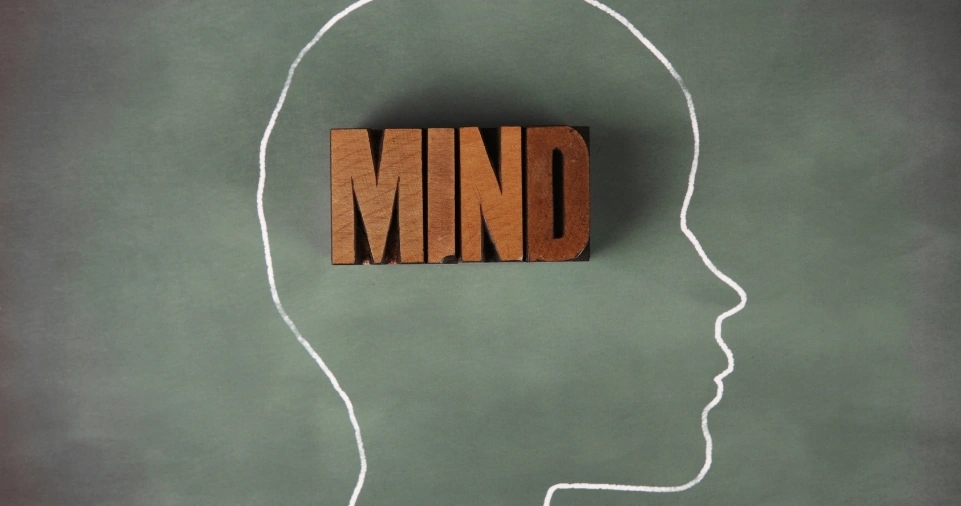Here’s something nobody talks about: we invest hours at the gym perfecting our bodies through exercise, count calories for better nutrition, track our cardio sessions religiously, yet the place we actually inhabit—our mind—gets zero maintenance. Your physical habitat could be a mansion filled with family, friends, and loved ones, but if your mental space resembles a war zone, none of it matters.
Without peace of mind, even the most wonderful physical habitat feels empty, adequate at best, nowhere near the fulfilling experience it should be. I learned this during a period when I couldn’t stop constantly worrying about every deadline at work, endlessly replaying conversations with a friend, analyzing what they meant. That’s when I realized I was living in your head like a prisoner, and I wasn’t alone in this struggle.
Looking back now, I can trace how this mental habit contributed to years of unhappiness. What shifted everything?
Therapy helped me understand something profound: my brain operates like a pattern-recognition machine, constantly making observations about the world and forming rules based on previous experience. These automatic thoughts exist to simplify decision-making in life, acting as mental shortcuts. But here’s the catch—the brain frequently makes errors when establishing these patterns.
The common error? Acting like an overprotective parent, applying “better safe than sorry” logic to situations that don’t warrant such caution. That automatic emotional reaction—your gut feeling—isn’t necessarily adjusting to reality accurately. Through life coaching, I realized how much overthinking and overanalyzing everything was draining my energy. My feelings felt like absolute truth incarnate, but they’re actually just biological suggestions, not commandments carved in stone.
This powerful idea echoes back thousands of years to the Stoics, who grasped that emotions serve as useful signals, not dictators. The moment I started learning techniques to get out of my head, life dramatically became easier.
We pour attention into learning, training, performing, teaching, and creating across various endeavors, yet we divert attention away from our most important domicile—this refuge where consciousness exists.
This internal space deserves equal attention to everything external we maintain, because transforming it into a nice place to be changes everything else. I wish I had known sooner there was another way to live beyond constant mental chatter.
What It Means to Live in Your Head
Being constantly preoccupied with thoughts creates an exhausting existence where you’re never fully anywhere. You cycle through reliving bad memories from years ago, replaying what people said during interactions, dissecting their tone and facial expressions, while simultaneously worrying about countless future scenarios that probably won’t happen.
When you’re always focusing on negative thoughts, you construct walls around yourself—becoming not open to new possibilities or things that genuinely could change your life for the better. This overthinking pattern typically emerges as a response to earlier trauma or persistent anxiety, functioning as an attempt to control the things in our life that feel unpredictable or threatening.
In an effort to protect ourselves, the mind tries desperately to predict outcomes for every hypothetical situation that might happen tomorrow, next week, next year. Ironically, this exhausting mental labor end up causing exponentially more stress in our lives than simply dealing with issues as they arise. There’s wisdom in planning ahead—nobody’s arguing against that.
But when you’re doing more thinking and analyzing than actual living, when mental simulations replace real experiences, it’s definitely time for a different approach. Being in your head frequently operates as a coping strategy designed to avoid confronting difficult realities or unpleasant emotions that demand attention.
Feeling all the feels seems wonderful and great during a dream vacation surrounded by beauty and joy, but not so much when you’ve lost your job or face serious challenges.
During tough times, retreating into the rational mind feels safer when trying to figure out logical things, which has its useful applications, but it’s not very helpful for actually processing feelings healthfully.
The danger here? Not processing your emotions creates a pressure cooker situation that will inevitably backfire one day, often manifesting as an unexpected emotional meltdown that seems to come from nowhere.
Watch for these 8 signs indicating you’re spending too much time trapped in mental loops:
- You’re endlessly replaying things that happened in the past, mining them for different meanings instead of accepting and moving forward.
- You’re always worrying about what can go wrong in upcoming situations, rehearsing disasters mentally.
- You’re mostly focusing on negative thoughts while filtering out contradictory positive evidence.
- You’re actively trying to control, get rid of, or systematically avoid unpleasant emotions rather than experiencing them.
- You’re barely paying attention to your immediate surroundings or the sensations in your body during daily activities.
- You’re excessively planning and trying to figure things out mentally rather than taking small actions.
- You’re always worried about what other people think of you, imagining their judgments constantly.
- You’re simply not feeling grounded or present in current moments because your attention constantly drifts to past or future.
Listen
Learning to listen—genuinely listen to yourself—changes everything, starting your personal growth immediately. You must start noticing those automatic thoughts before you passively let them dictate your feelings and subsequent behaviors. This awareness represents the crucial first step toward mental freedom.
The next time you react to something with an inappropriate level of sadness, anxiety, or fear that seems disproportionate, consciously freeze the moment. Stop everything mentally. Rewind the tape of what just transpired in your head and ask yourself some investigating questions: Which specific automatic thoughts led up to these intense feelings? What hidden unspoken rules are they supporting within your belief system?
We aren’t going to blindly let these thoughts run the show anymore by accepting them as gospel truth. These thoughts deserve their proper day in court where evidence matters. Everything meaningful starts with asking one very simple question: “How true is this really?” Time to play prosecutor with your own thinking patterns. If we’re genuinely going to let this thought determine our happiness and influence major decisions, it better have a substantial lot of evidence that will stand up in court under rigorous scrutiny.
Consider this common automatic thought: “Nobody likes me.” Now apply disciplined deliberate thought: “Ladies and gentlemen of the jury, I would need to assume a comprehensive global survey of all 7 billion people currently living on the planet has been systematically performed for such an absolute statement like that to be reasonably accurate. Was such a survey done with proper methodology? No? Then I submit this claim should not be entered as valid evidence in this courtroom of the mind.”
Aaron Beck, pioneer of cognitive therapy, talks about making a distinction between statements like “I believe” (which represents an opinion that’s subject to validation and revision) and “I know” (which claims status as an irrefutable fact). When we can show convincingly that these thoughts aren’t true or are at least questionable, suddenly the scary gun dramatically becomes an innocuous water pistol—and the paralyzing fear vanishes almost instantly.
The cognitive therapist induces the patient to apply the exact same problem-solving techniques they’ve successfully used throughout his life in other domains to correct their fallacious thinking patterns. These mental problems are typically derived from certain distortions of reality that are based on deeply held erroneous premises and stubborn misconceptions about how things work. These distortions originated in defective learning during their early development years through family dynamics, school experiences, or cultural messaging.
The formula for treatment may be stated in simple terms that anyone can understand: The therapist helps the patient systematically identify their warped thinking patterns and learn more realistic ways to formulate their experiences going forward. Your personal rules and automatic thoughts may be highly idiosyncratic to your unique history, but they’re far from random in their structure and function.
The errors they consistently suffer from usually fall into just a handful of categories that researchers have identified. Once we accurately identify the type of error we’re habitually making, we can apply a more specific challenge tailored to that distortion, which will effectively start you on the path to rewiring things mentally and feeling better on a consistent basis.
Round Up the Usual Suspects

Let’s examine the 8 most common errors in thinking and find out how your inner prosecutor can effectively dismantle them in court. You probably engage in several of these distortions regularly, but let’s focus on identifying your primary one for now because time is short and honestly, I have a lot of very important TV to watch tonight (kidding, but prioritization matters).
First Distortion – Filtering
This happens when you habitually focus on the negative aspects of situations while you completely ignore the positive evidence sitting right there. Imagine you win a free Ferrari in a contest and your immediate first reaction centers entirely on “The insurance payments are gonna kill me” rather than the incredible gift—that’s textbook filtering. The plan of attack? You need to change your focus deliberately toward the legitimate good aspects of the situation at hand. Force yourself to actually list all the positives on paper. You’re not just thinking happy thoughts mindlessly—you’re consciously trying to balance the scales and be genuinely objective about reality.
Second Distortion – Polarized Thinking
Polarized thinking means seeing everything as black and white with absolutely zero middle ground available. If you’re not perfect at something, you’re automatically a complete failure. If someone doesn’t love you romantically, they must hate you personally.
If winning a silver medal at the Olympics somehow makes you a loser in your mind, that’s polarized thinking controlling your perception. How do we attack this one effectively? Realize that seeing the world as black and white is inherently inaccurate and completely unrealistic given life’s complexity. I wish life was that simple sometimes. It’s not. There are big heaping piles of nuance all over the place in virtually every situation.
So, correct this tendency by making yourself evaluate in percentages: “80% of this is awful, but 20% is pretty good” gives you a more honest, balanced assessment.
Third Distortion – Overgeneralization
Overgeneralization involves making broad conclusions based on little evidence from extremely limited experiences. One breakup suddenly means “No one will ever love me” for the rest of your entire existence. Extreme words like “all,” “every,” “none,” “never,” “always,” “everybody,” and “nobody” serve as a reliable tip off you’re overgeneralizing wildly beyond what data supports. This one is relatively easy to attack logically because statements containing superlatives like “all” or “never” rarely withstand basic logical scrutiny when examined carefully. Consider the amount of evidence you actually possess. One instance does not make a trend or reliably predict all future outcomes.
Fourth Distortion – Mind Reading
mind reading means when you assume you somehow know what others are thinking or feeling without any actual confirmation. “Sarah is frowning, so obviously she hates me” represents a massive, unfounded leap. Sorry to break the news to you, Professor X, but you’re simply not psychic despite what you believe. And ironically, the more psychic you think you are, the more problems you will have in this life through constant misunderstandings.
How to beat this one? Much like with filtering, you want to generate alternatives for interpreting their behavior. Why else might Sarah be frowning right now? Could be hemorrhoids. Sarah doesn’t hate you. Sarah has butt problems she’s dealing with. Or you can try this revolutionary incredible technique: Just ask Sarah directly why she’s frowning instead of inventing elaborate stories.
Fifth Distortion – Catastrophizing
Catastrophizing means your mind automatically jumps to disaster. Did you forget your keys this morning? Then you must have Alzheimer’s and your mind is deteriorating. When you always jump immediately to the worst possible scenario available, that’s catastrophizing. (Or it’s a tumor, right?) You conquer catastrophizing by being a bookie who calculates actual odds. Assess the odds realistically. If you had to bet actual real money on the outcome, would you seriously wager that Phil isn’t answering his phone because he’s a forgetful moron who forgot to charge it and the battery is dead, or because a catastrophic meteor storm took him out along with the entire Eastern seaboard of the country? Statistically, I’m definitely gonna have to go with “Phil’s a moron.”
Sixth Distortion – Magnifying
Where every molehill dramatically becomes a mountain in your perception. Made a small error? Nope, it’s transformed into a tragedy of Shakespearean proportions. Encountered a minor obstacle? Of course not; it’s now an insurmountable barrier. The plan of attack here involves reminding yourself of specific examples from your own past when you’ve successfully handled situations that were objectively far worse than the current one. It isn’t overwhelming and unbearable—it’s a long line at the grocery store, alright? Perspective matters.
Seventh Distortion – Personalization
Personalization means you assume everything people do or say is some kind of negative reaction specifically to you. (Isn’t it amazing how you can have low self-esteem yet still be utterly obsessed with yourself simultaneously?) Again, you want to generate alternatives here.
But when doing this, you want to keep in mind something that’s mildly distressing but nonetheless utterly true: Most things are not about you because, in the grand scheme of things, you’re actually not that important. Yeah, you’re definitely important to family and friends—but I’ll lay odds right now that in 50 years, public schools will be open on your birthday because you’re not a national holiday. Everything is not about you, and it only takes a little time being paranoid or being famous to realize this is usually a wonderful thing actually.
Eighth Distortion – “Shoulds”
“Shoulds” represents rules you make about how other people or the world is supposed to behave. People should drive like this, they shouldn’t talk like that, and my god, what is the world coming to? Since you’re not god, people don’t obey your shoulds, and the inevitable result is you walk around perpetually frustrated.
There are also shoulds we put on ourselves: I should always be the best. I should always be the perfect friend, parent, or spouse. I should never get upset or feel hurt. And a zillion others no mortal can ever live up to realistically. Plan of attack? First, you’re not in charge of the universe, so stop expecting your fiats to have any effect whatsoever on other people’s behavior.
People aren’t frustrating you; your absurd expectations are. Second, remember that values are personal. You think people should be on top of everything. But maybe they value not being a stress case. Different values, different behaviors. Remind yourself that not everyone has the same values you do.
Rewiring In Progress
We know how to defuse negative thoughts, but nature abhors a vacuum (and so do most household pets). So, we need new thoughts to replace the problematic ones. What to do? First, put an APB out on the automatic thought you usually have. Keep listening for it now that you know how to identify it. And then you gotta catch the puppy when it’s pooping on the carpet. That’s how you train dogs, and that’s how you rewire your brain. Catch it in the act of making the error and let your prosecutor go all Law and Order on it.
Here’s how it plays out: You: “Phil’s late.” Your brain: “Clearly, Phil has died in a car crash. Best thing to do now is engage in profound anxiety. I’ll initiate Hysteria Protocol 847…” You: “Whoa, sounds like the catastrophizing thing I read about in that supremely excellent blog post. It’s 6AM. The likelihood of Phil having died in a car crash right now is quite low, while the likelihood of him having overslept is very high.” Your brain: “Grrrr… Fine, Hysteria Protocol 847 deactivated.”
Now, it won’t go that simply the first time out. Your brain will try all kinds of tricks. But the important thing is to not accept its automatic responses as gospel. Don’t fight the feelings—argue logic and evidence against the underlying thought. Once you win, keep that new thought as a mantra for future court battles. “People are rarely late because they died. They’re late because of something innocuous that isn’t worth getting upset over.” As your shiny new thought proves accurate time and time again, your brain will slowly adopt this rule and reduce the negative feelings associated with the old one. Keep correcting the puppy, and eventually your carpet is poop-free.
Creating Your Mental Refuge
The truth is, there’s no simple answer to this question. It’s so personal and so unique to each individual that one person’s formula is another person’s insanity. The first step towards creating a mental refuge is coming into the present moment. Many of the mind’s distractions arise from not being in the now. If the mind is racing, it’s most likely due to thinking about things that may arise in the near future, or rehashing those that transpired previously. Once in the now, the next step is to create food for your mind that nourishes rather than depletes.
This is so very unique to each individual that only your own personal explorations will enable you to find this piece of the puzzle. For some it comes through meditation, and others through religion. Some must be creating a majority of their free time, or their mind starts to wilt. Some need open space and quiet; others want visual stimuli and music. It may take its form in the course of walking through a beautiful location, while others are most content in a comfortable chair, sitting by a fire, reading a great book.
The brain has a definitive hunger that must be fed. If you’re not listening to it and feeding it what it requires, it will most certainly make you aware of your lack of mental nutrition. Once you have found the zone that makes your mind happiest, and once you have enabled it to feed on that which creates inner harmony within your being, then it is time to start to feed it new material. That could come in the form of art, media, philosophy, travel, or communication with others.
It would be wonderful if there were an easy answer to this question, but in truth, it’s even more wonderful that there is not. With 7 billion minds occupying this planet, how amazing is it that so many are focusing on such a disparate range of topics, stimuli, experiences, and endeavors? This age of diversity creates more opportunity for a fertile mind to blossom than ever before. If you’re not feeding yours, then perhaps you’re missing out on what life is truly about. In the immortal words of Grace Slick and Paul Kalkbrenner: “Remember what the dormouse said, Feed your head!”
Why You Should Get Out of Your Head and Into Your Body
It’s normal to daydream and spend time contemplating your life (hi there, fellow introverts!), but when you’re consumed with your thoughts too much, it can lead to unhappiness. According to a Harvard study done by psychologists Matthew A. Killingsworth and Daniel T. Gilbert, “people spend 46.9 percent of their waking hours thinking about something other than what they’re doing, and this mind-wandering typically makes them unhappy.” When you’re experiencing the world through just your thoughts—and not your senses—you’re missing out on what the present moment has to offer.
Seeing your life through a narrow lens of bad memories, negative thoughts, and fears about what can go wrong will shape how you live your life (usually not in a good way). When you get out of your head, it means you’re being fully present and aware of your surroundings and the sensations in your body. This helps you respond to things that are happening in the moment that you otherwise might have been oblivious to—for example, connecting better with the people in your life because you’re actually listening to them, or being more in tune with your feelings and intuition (which will ultimately help you make better decisions in life).
How to Stop Living in Your Head and Be More Present

If you think you might be living in your head too much, here are six ways to become more present.
1. Do a Meditation
Meditation is one of the best ways to get out of your head and be more present. But for someone with an overactive mind, it can be hard to meditate at first. Start meditating for just 5 or 10 minutes a day and build up from there. I’ve found the best times to meditate are generally right after waking up or before going to bed. But see what works best for you. Calm and Headspace are my favorite apps for guided meditation.
2. Become Aware of Your Thoughts
Check in with yourself throughout the day and observe what you are thinking. Are you repeating negative thoughts? Are you replaying over and over what your boss said to you yesterday? If it’s hard for you to remember to check in with yourself, combine it with routines you’re already doing on a daily basis—such as brushing your teeth or doing the dishes.
3. Focus on Your Breathing
Doing a breathing exercise can really help you reset your stress response and slow down your thoughts. There are many different types of breathwork you can do, but one of my favorites is a form of yogic deep breathing called box breathing. Here’s how to do it: Gently breathe in for four counts. Hold your breath for a count of four. Slowly breathe out for another four counts. Hold for four counts before you start breathing in again. Repeat the four steps for at least a couple of minutes, or until you start to feel calmer. If you’re going through a very stressful time, you may want to do this multiple times a day. Bonus points for doing box breathing outside!
4. Get Some Exercise
Many of us don’t get enough exercise, so sometimes just getting your body moving is all it takes to get out of your head. Go out for a walk, do a quick run, or hit the yoga mat to stop your endless thoughts. If you don’t have time to do any of those activities, do some light stretching for a few minutes in between tasks. Focus on your breath and how you feel in your body. This will help you feel more grounded.
5. Journal
Getting your thoughts down on paper helps you become aware of what you are thinking. Journaling also helps you let go of unwanted thoughts. One of my favorite way to journal for this purpose is automatic writing. Just write down whatever you are thinking, even if it makes no sense. The point is to get your thoughts out of your head. It can be helpful to reread what you’ve written and challenge some of your thoughts. Are your negative thoughts really true?
6. Practice Mindfulness
How aware are you of the world around you? When you’re fixated on your thoughts, you’re often not paying attention to your five senses. Here are some ideas on how to practice mindfulness: Pay attention to what you see around you. Smell the air. Observe sounds you can hear.
Focus on sensations in the body. Notice any emotions you are feeling. I like to use walks to become more mindful. I focus on breathing in the fresh air, observing the leaves and their colors, or listening to the birds. But you can also use daily routines like eating a meal, taking a shower, or doing the dishes to become more aware of your senses. When you pay attention to each sensation, it will quickly take you out of your mind and into your body. Sidenote: make sure to not judge any of your observations because this will quickly take you back to your thoughts.
Sum Up
Here’s how to rewire your brain for happiness: Cognitive therapy 101—thoughts determine feelings. Change your thoughts, and your feelings will follow. Listen. Don’t let your reactions just happen. They could have gone another way. Why didn’t they? What did your brain say that made you pick A instead of B? What rule was its decision based on? Round up the usual suspects. Get Dr. House on the case. Which thinking error are you falling prey to? Correct diagnosis leads to a cure after the third ad break. Rewire. You gotta catch the puppy in the act. Yes, your brain is an adorable, insufferably incontinent creature, but we can fix that latter part.
Automatic thoughts are frustrating, but don’t get angry with them. Because them is, well, you. Kinda. Getting angry with the thoughts won’t help you. Either of you. You and not-you need to get along. Sharing a skull with someone is challenging, so be nice to everybody in there and life gets a lot easier. Your brain does not hate you. It’s trying to help. Again, it’s like an overly concerned parent that wants to protect you from pain. Instead of declaring an all-out war with the thoughts in your head (that’s the express train to crazytown, by the way), it’s far better to treat them like the overbearing parent they are. Thank them for their input. Then calmly go through the rewiring process. You live most of your life inside your head. Make sure it’s a nice place to be.
Living in your head too much can cause you to not be present. And when you’re not present, you end up missing so much of the beauty in life, which can contribute to more unhappiness. If you feel this is you, I hope this post has inspired you to get out of your head and into your body. Just know it’s a slow process—don’t be hard on yourself if you still find yourself thinking too much. Getting out of my mind is still something I have to practice every day.




